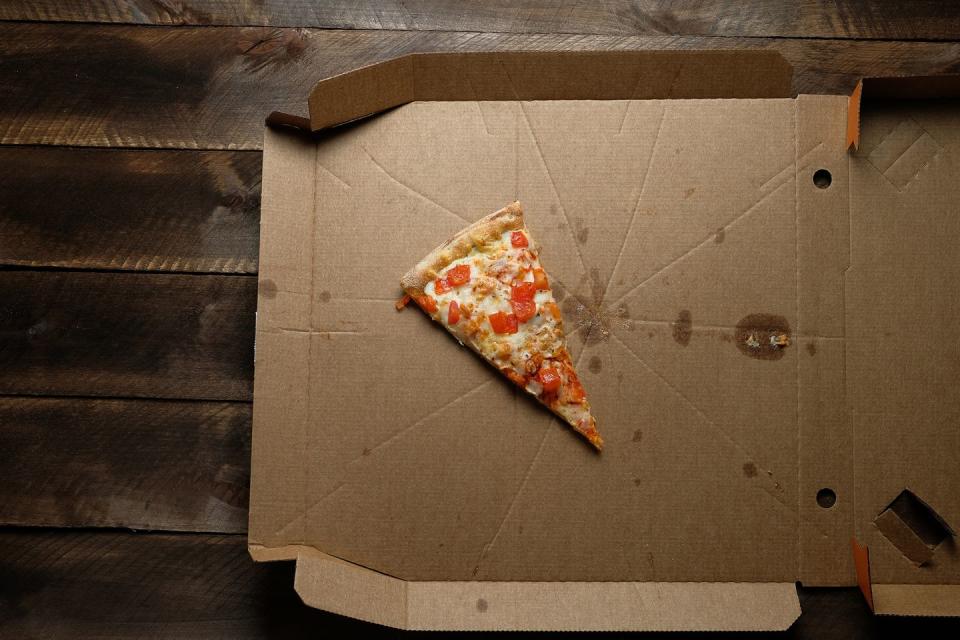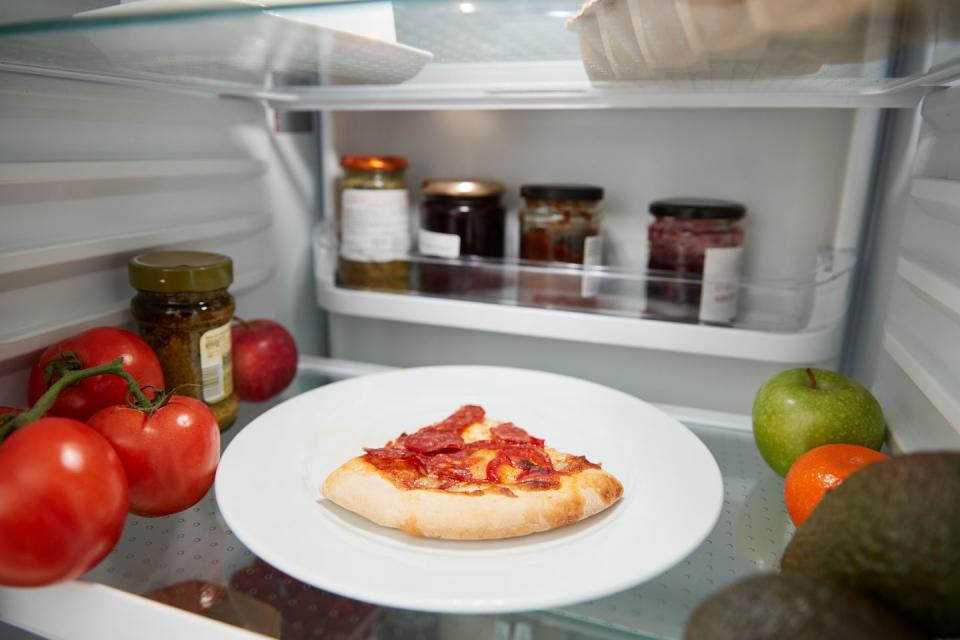PSA: Read This Before Eating Your Leftover Game Day Pizza

An obligatory step in planning any birthday celebration or game day watch party is ordering a few boxes of pizza. But there's always the same dilemma at the end of the day: figuring out what to do with your leftovers. Room in the refrigerator is a hot commodity, which makes it near impossible to find space for bulky pizza boxes.
You can try consolidating different slices into the same box, or attempt to transfer it to a smaller container, but the hassle is still sometimes too much to handle. So if you've ever considered keeping your leftover pizza on the counter, we totally get it.
But there's a lot of confusion when it comes to how you can safely store food. Keeping food at room temperature can be either completely safe or a massive health hazard, depending on the food in question. Health officials warn about the risk of contracting serious, sometimes fatal food-borne illnesses through improper storage.
But other foods are fair game. Bread and tomatoes, for example, shouldn’t be refrigerated anyway—and that’s two-thirds of a pizza, right? So can we get away with keeping our pizza on the counter and spare ourselves from playing a game of refrigerator Tetris?
We’re breaking down everything you need to know about storing pizza and whether your pie can stay at room temperature.
Is It Safe To Leave Leftover Pizza Out?

Sorry to break the news, but pizza should absolutely not be stored at room temperature overnight. In fact, it shouldn’t even spend more than a few hours on the counter. The temperature range of 40-140°F is widely known amongst health and food service professionals as the temperature danger zone—aka the climate where bacteria can thrive.
The USDA reports that bacteria can start taking over your leftovers in as little as 20 minutes. And after two hours, it's deemed unsafe to eat left-out pizza at all. In mild to moderate cases, getting food-borne illnesses from room temperature food means stomach pain, diarrhea, vomiting, and fever. But more serious cases involve hospitalization and even death, like this 2008 case involving leftover pasta.
There are certain ingredients that have a much higher risk factor when it comes to bacteria growth, and it mostly comes down to the level of moisture and protein present. Baked goods like bread, cakes, and cookies all have relatively low protein and moisture levels (and are often preserved with plenty of fat and sugar), which means they can safely sit out on the counter for a few days.
Pizza, on the other hand, has plenty of protein and moisture that can invite harmful bacteria. The dough itself doesn’t present much danger, but the sauce, cheese, and toppings definitely do. Cheese, alongside milk and other dairy-based products, is one of the most at-risk ingredients. The FDA notes that the high levels of protein and moisture in cheese make it especially vulnerable for bacterial growth.
The same goes for the sauce and certain toppings. Cooked vegetables (like peppers, mushrooms, and tomato-based pizza sauces) contain a lot of natural liquid which can cause bacteria like Salmonella and E. coli to grow.
How To Properly Store Leftover Pizza

Just because you can’t keep your pizza box on the counter overnight doesn’t mean you need to shove the entire thing into your refrigerator. Actually, it’s recommended that you take your slices out of the box before storing them.
The climate of your fridge, aside from being cold, is also really humid. So, if stored in an open container like a pizza box, your slices will gradually absorb some of the ambient moisture. Not only does that make your crust sad and soggy, it also infuses your leftovers with whatever other smells are floating around in the fridge. Yuck!
So your safest bet for storing pizza is transferring your slices into an airtight container or resealable plastic bag (the Costco hackers were actually onto something). Make sure to label your container with the day you first ate it, then keep it in the refrigerator for no longer than four days. And, according to the USDA, you can pop your leftovers in the freezer and they’ll stay good for up to two months.
Want to know how to reheat leftover pizza so it tastes just as delicious as when it was delivered? Check out our ultimate guide here.
You Might Also Like


